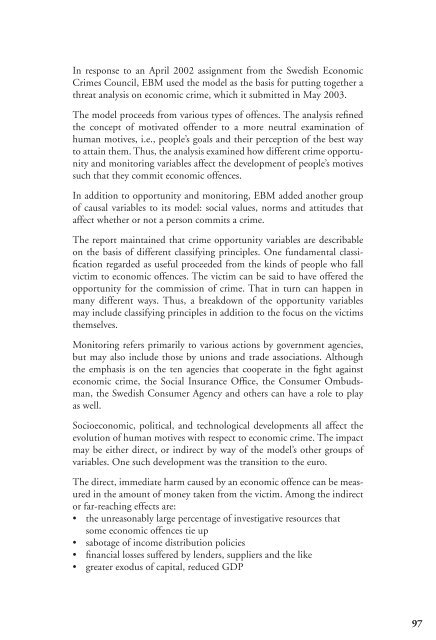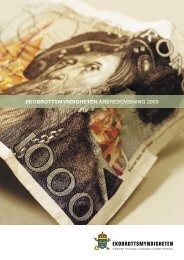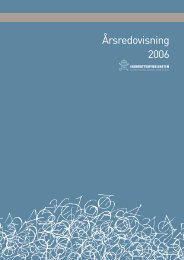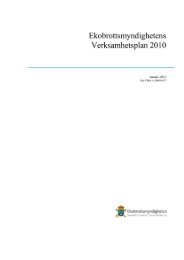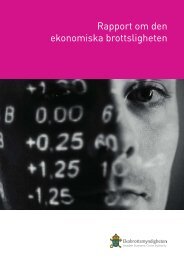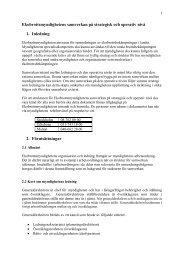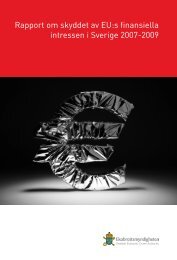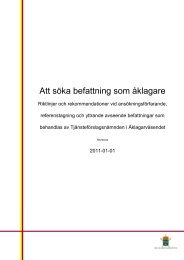Economic crime report 2004 - Ekobrottsmyndigheten
Economic crime report 2004 - Ekobrottsmyndigheten
Economic crime report 2004 - Ekobrottsmyndigheten
Create successful ePaper yourself
Turn your PDF publications into a flip-book with our unique Google optimized e-Paper software.
In response to an April 2002 assignment from the Swedish <strong>Economic</strong><br />
Crimes Council, EBM used the model as the basis for putting together a<br />
threat analysis on economic <strong>crime</strong>, which it submitted in May 2003.<br />
The model proceeds from various types of offences. The analysis refined<br />
the concept of motivated offender to a more neutral examination of<br />
human motives, i.e., people’s goals and their perception of the best way<br />
to attain them. Thus, the analysis examined how different <strong>crime</strong> opportunity<br />
and monitoring variables affect the development of people’s motives<br />
such that they commit economic offences.<br />
In addition to opportunity and monitoring, EBM added another group<br />
of causal variables to its model: social values, norms and attitudes that<br />
affect whether or not a person commits a <strong>crime</strong>.<br />
The <strong>report</strong> maintained that <strong>crime</strong> opportunity variables are describable<br />
on the basis of different classifying principles. One fundamental classification<br />
regarded as useful proceeded from the kinds of people who fall<br />
victim to economic offences. The victim can be said to have offered the<br />
opportunity for the commission of <strong>crime</strong>. That in turn can happen in<br />
many different ways. Thus, a breakdown of the opportunity variables<br />
may include classifying principles in addition to the focus on the victims<br />
themselves.<br />
Monitoring refers primarily to various actions by government agencies,<br />
but may also include those by unions and trade associations. Although<br />
the emphasis is on the ten agencies that cooperate in the fight against<br />
economic <strong>crime</strong>, the Social Insurance Office, the Consumer Ombudsman,<br />
the Swedish Consumer Agency and others can have a role to play<br />
as well.<br />
Socioeconomic, political, and technological developments all affect the<br />
evolution of human motives with respect to economic <strong>crime</strong>. The impact<br />
may be either direct, or indirect by way of the model’s other groups of<br />
variables. One such development was the transition to the euro.<br />
The direct, immediate harm caused by an economic offence can be measured<br />
in the amount of money taken from the victim. Among the indirect<br />
or far-reaching effects are:<br />
• the unreasonably large percentage of investigative resources that<br />
some economic offences tie up<br />
• sabotage of income distribution policies<br />
• financial losses suffered by lenders, suppliers and the like<br />
• greater exodus of capital, reduced GDP<br />
97


